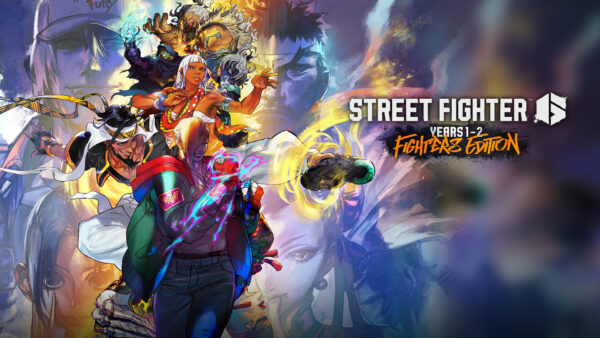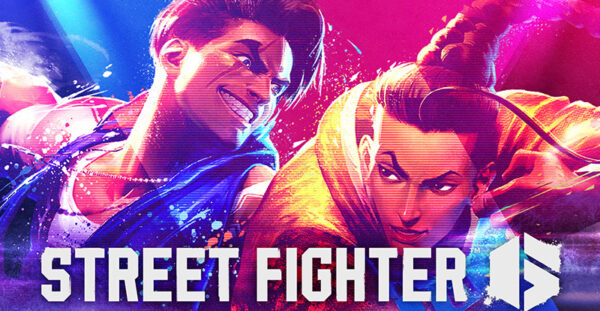Popular Now
Introduction
Street Fighter 6 (SF6) is a dynamic, competitive fighting game that rewards skill, timing, and strategy. As the latest installment in Capcom’s iconic franchise, SF6 introduces new mechanics, deeper customization, and a fresh roster of characters. Whether you're stepping into the arena for the first time or looking to sharpen your edge, understanding the nuances of SF6 is essential. This guide will walk you through ten structured sections—from the basics of controls to mastering advanced mechanics—designed to improve your gameplay at every level.
1. Getting Started: Understanding Controls and Modes
Street Fighter 6 offers multiple control schemes and gameplay modes tailored to players of all skill levels. Whether you're new or experienced, understanding your tools is key.
Classic vs. Modern Control Schemes
SF6 introduces two major control layouts:
-
Classic Controls: A traditional 6-button layout offering full move control.
-
Modern Controls: Simplified inputs for easier special attacks and combos.
Choosing the right control style can define your early learning curve. Beginners may favor Modern for accessibility, while veterans may stick to Classic for precision.
Exploring Game Modes
Key modes in SF6:
-
Fighting Ground: Traditional 1v1 matches, perfect for practicing fundamentals.
-
World Tour: A story-based, single-player mode great for learning mechanics.
-
Battle Hub: Online matches and tournaments—where the real competition begins.

2. Picking the Right Character for Your Playstyle
Each character in SF6 is uniquely designed to accommodate various playstyles—ranging from aggressive rushdowns to patient zoners.
Character Archetypes
Characters typically fall into these categories:
-
Shoto (Balanced): Ryu, Ken—versatile with fireballs and uppercuts.
-
Grapplers: Zangief—focus on close-range, command grabs.
-
Zoners: JP, Dhalsim—excel at keeping opponents away.
-
Rushdown: Cammy, Kimberly—relentless pressure up close.
How to Choose Wisely
New players might consider Luke or Ryu for their balanced move sets. As you grow, try experimenting with different archetypes to find what resonates with your natural rhythm.
3. Learning the Fundamentals of Combat
Before diving into combos or online matches, it's crucial to understand the basic building blocks of Street Fighter combat.
Neutral Game and Spacing
The "neutral" is when neither player is attacking. It’s about positioning and baiting your opponent into mistakes.
-
Control space with pokes (light/medium attacks).
-
Use walk speed and dashes to control distance.
Blocking and Defense
Defending correctly is as important as attacking. Learn to:
-
Block high (standing) and low (crouching).
-
Tech throws by pressing light punch + light kick simultaneously.
Mastering the neutral and defense creates the foundation for advanced gameplay.
4. Special Moves, EX Attacks, and Overdrives
Special moves are core to each character's identity, but SF6 expands the options with enhanced variants.
Using Special Moves Effectively
Every fighter has command inputs like quarter-circle forward (QCF) + punch to trigger a special. Know their properties:
-
Fireballs control space.
-
Uppercuts are anti-airs.
-
Dashes close distance quickly.
EX Attacks and Overdrives
By spending part of your Drive Gauge, you can enhance moves:
-
EX/Overdrive versions deal more damage or add invincibility.
-
Use sparingly—Drive Gauge is limited and vital.
Practice in training mode to understand the range and frame data of these moves.

5. Mastering the Drive System
The Drive System is the most significant new mechanic in SF6. It provides various options at the cost of your Drive Gauge.
Drive Impact
A powerful armored move that absorbs one hit and crumples opponents. It’s used to:
-
Break through pressure.
-
Punish unsafe moves.
-
Corner opponents.
Drive Parry and Drive Rush
-
Drive Parry: Absorb incoming attacks with the right timing.
-
Drive Rush: Dash cancel from normals to extend combos.
Drive Gauge Management
Don't overuse Drive Impact or you risk burnout—a state where your character takes more chip damage and can’t use Drive options.
6. Building Combos and Hit Confirms
Combos deal damage and apply pressure. But blindly throwing out attacks won’t work—timing and confirmation are key.
Basic Combo Structure
Most combos follow this flow:
-
Light/medium normal
-
Cancel into special
-
Optionally finish with an Overdrive move
Hit Confirms
Hit confirms are when you visually confirm your attack connects before continuing the combo. Practice with:
-
Light attacks into special.
-
Buffering commands and waiting for confirmation.
In training mode, enable hit display and practice converting attacks on hit but stopping on block.
7. Reading Opponents and Using Mind Games
SF6 is as much a mental game as it is mechanical. Reading your opponent’s habits is how you level up.
Common Habits to Exploit
-
Wake-up DP (dragon punch): Punish with baiting.
-
Jumping too often: Anti-air them consistently.
-
Always tech throws: Go for frame traps instead.
Mind Games and Conditioning
Condition your opponent by:
-
Repeating a safe pattern to make them overreact.
-
Suddenly changing rhythm or tactics (e.g., empty jump into throw).
A strong read can turn a losing match into a victory.

8. Training Mode: Practicing with Purpose
Blindly spending hours in Training Mode isn’t enough. Use it with specific goals to build consistent execution.
Training Goals Checklist
-
Practice 3 bread-and-butter (BnB) combos.
-
Learn anti-air timing.
-
Drill throw tech reactions.
Utilizing Tools
Enable input display, set dummy to random block, and record reversal options to simulate real match scenarios.
Use save states to repeatedly practice punishing specific situations like missed Drive Impact or unsafe specials.
9. Climbing the Online Ladder: Ranked Tips
Going online can be daunting, but it’s also the best way to learn. Ranked mode pits you against similar skill levels.
Dealing with Lag and Nerves
-
Use wired connection for stability.
-
Warm up in Training Mode before queuing.
-
Accept losses as lessons—review replays often.
Climbing Strategy
-
Start with consistent characters and simple combos.
-
Don’t chase wins—chase knowledge.
-
Learn matchups one at a time.
Play to improve, not to impress. Growth in ranked is about consistency, not flair.
10. Advanced Mechanics and Tournament Mindset
As you grow, start integrating high-level tactics and preparing mentally for tough matches.
Frame Traps and Meaties
-
Frame traps: Deliberate gaps to catch mashing opponents.
-
Meaties: Well-timed attacks on opponent’s wake-up that hit early in their active frames.
Mental Preparation
-
Stay calm under pressure.
-
Don’t tilt—breathe and reset after a round loss.
-
Use breaks between matches to mentally recharge.
Tournament Tips:
-
Know your matchups ahead of time.
-
Play your game—don’t adjust to your opponent’s pace too quickly.
-
Trust your training.
Conclusion
Street Fighter 6 blends legacy and innovation, creating a fighting game that’s accessible to newcomers yet rewarding to veterans. Mastering SF6 isn’t just about pressing buttons—it’s about understanding mechanics, reading opponents, and staying mentally sharp. From learning your first combo to dominating ranked matches, the path to mastery is gradual but deeply satisfying. Apply these tips and guides consistently, and you’ll see tangible improvement in both your technical ability and strategic mindset. Remember: everyone starts as a beginner, but with the right knowledge, anyone can rise to champion status.



















